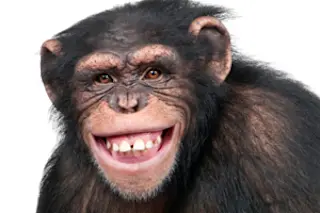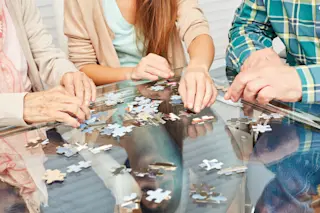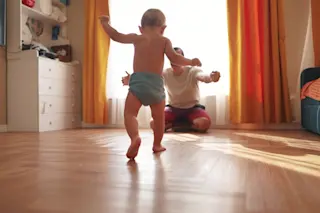What intrigues me most about laughter is how it spreads. It’s almost impossible not to laugh when everybody else is. There have been laughing epidemics, in which no one could stop and some even died in a prolonged fit. There are laughing churches and laugh therapies based on the healing power of laughter. The must-have toy of 1996—Tickle Me Elmo—laughed hysterically after being squeezed three times in a row. All of this because we love to laugh and can’t resist joining laughing around us. This is why comedy shows on television have laugh tracks and why theater audiences are sometimes sprinkled with “laugh plants”: people paid to produce raucous laughing at any joke that comes along.
The infectiousness of laughter even works across species. Below my office window at the Yerkes Primate Center, I often hear my chimps laugh during rough-and-tumble games, and I cannot suppress a chuckle myself. It’s ...














